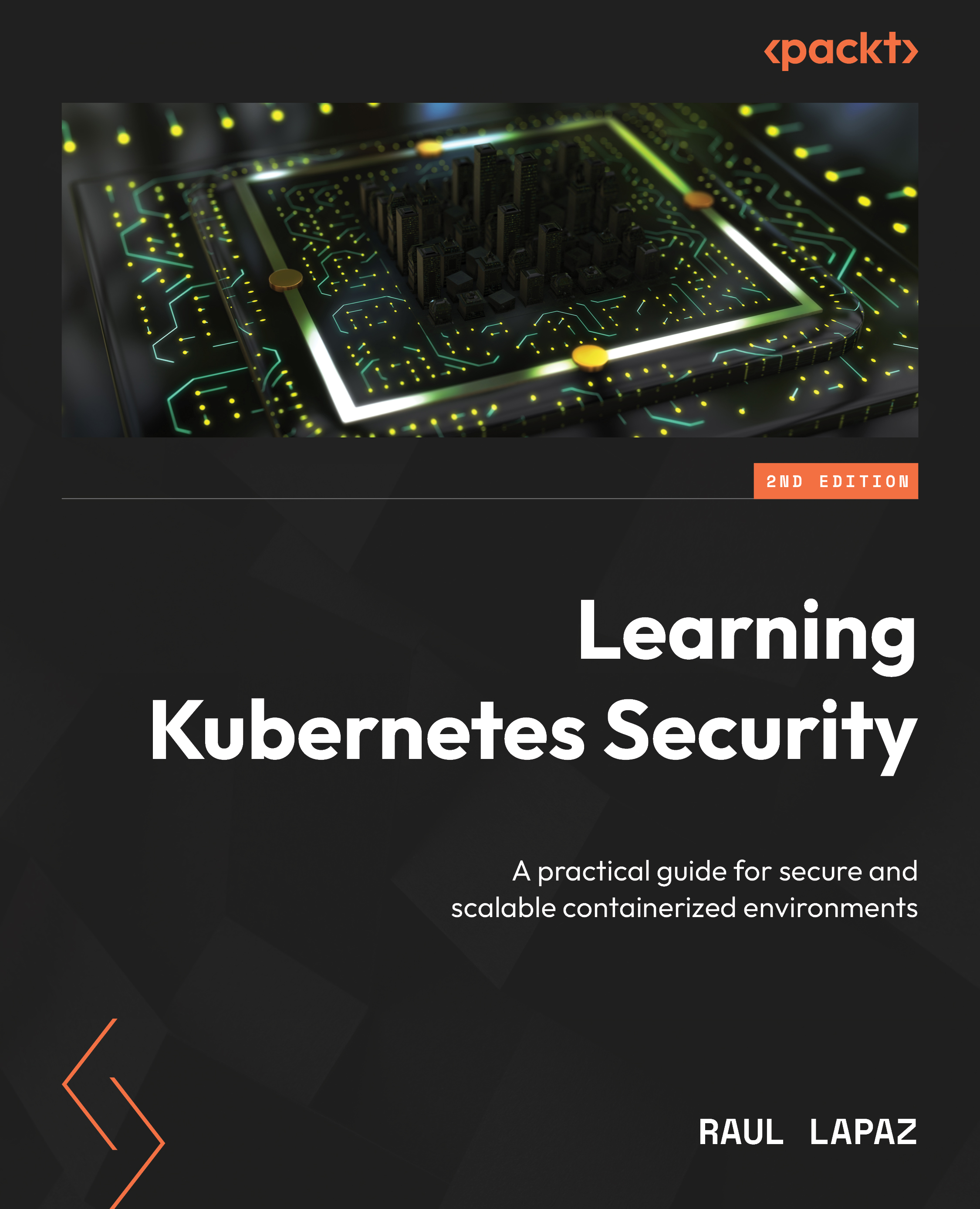Kubernetes security domains
A Kubernetes cluster can be broadly split into three security domains:
- Kubernetes master components: Kubernetes master components define the control plane for the Kubernetes ecosystem. The master components are responsible for decisions required for the smooth operation of the cluster, such as scheduling. Master components include
kube-apiserver,etcd,thekube-controller-manager, DNS server, andkube-scheduler. A breach in the Kubernetes master components can compromise the entire Kubernetes cluster. - Kubernetes worker components: Kubernetes worker components are deployed on every worker node and ensure that Pods and containers are running nicely. Kubernetes worker components use authorization and TLS tunneling for communicating with the master components. A cluster can function with compromised worker components. It is analogous to a rogue node within the environment, which can be removed from the cluster when identified.
- Kubernetes...

































































